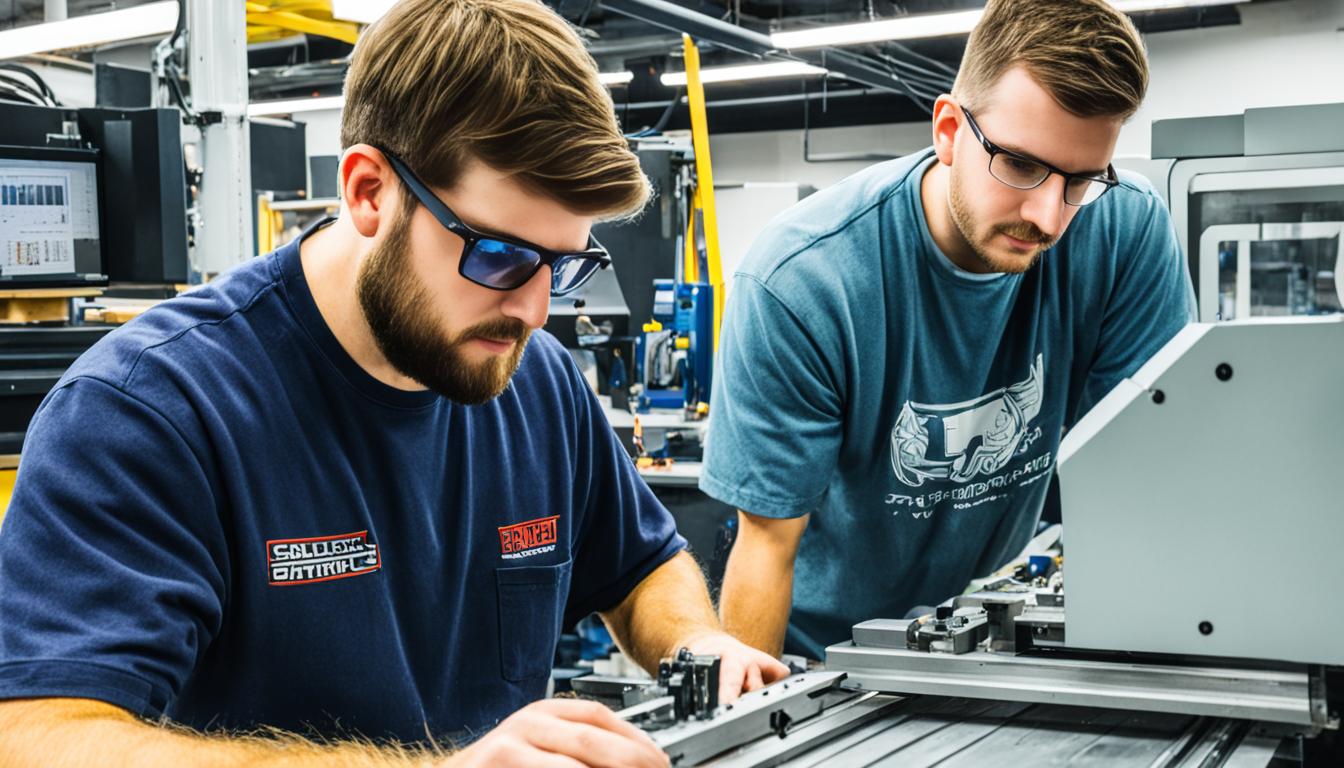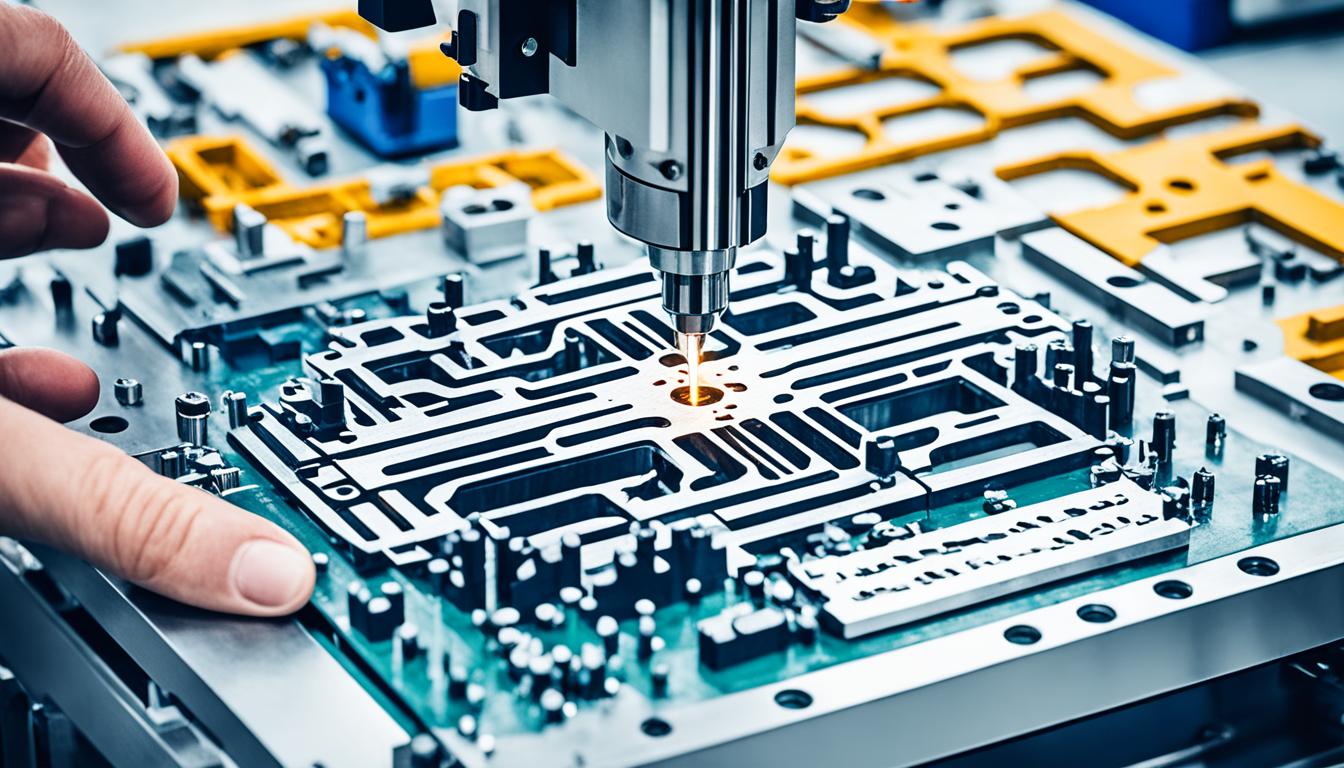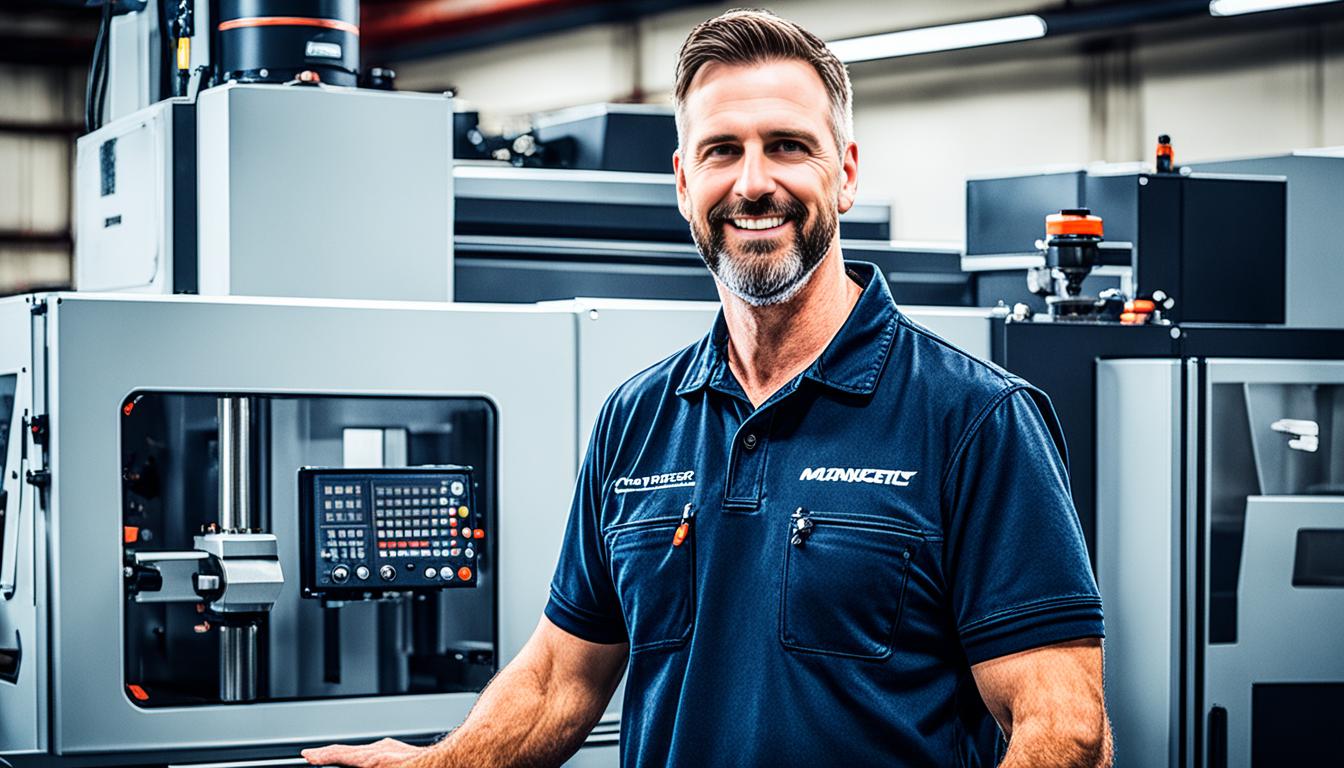CNC programming has revolutionized manufacturing, leading to numerous real-world successes across industries. Aerospace companies have achieved unprecedented precision in crafting complex turbine blades, reducing material waste and enhancing engine efficiency. In the automotive sector, CNC-programmed production lines have dramatically increased output and consistency, enabling mass customization of vehicle components.
Medical device manufacturers have leveraged CNC programming to create intricate implants and prosthetics, improving patient outcomes and quality of life. The technology has also transformed the jewelry industry, allowing for the creation of intricate designs that were previously impossible to produce at scale. In construction, CNC-programmed machines have enabled the fabrication of custom architectural elements with remarkable accuracy, reducing on-site errors and installation time.
These successes demonstrate how CNC programming has not only improved product quality and manufacturing efficiency but also opened up new possibilities for innovation and design across diverse fields.
- CNC programming is vital for the success of CNC machining operations.
- Advanced technologies and tools play a crucial role in achieving real-world successes in CNC programming.
- Case studies and success stories provide valuable insights into the potential of CNC programming.
- Continuous learning and adaptation are essential to stay ahead in the rapidly evolving field of CNC programming.
- The future of CNC programming lies in embracing advanced technologies and industry trends.
Mastercam OptiRough: Improving Efficiency in CNC Programming
Mastercam OptiRough is a powerful tool in CNC programming that harnesses the capabilities of Dynamic Motion technology. This innovative technology enables optimized cutting motion on any geometry, resulting in improved tool life, greater machining efficiency, and maximum material removal. By leveraging the concept of radial chip thinning, OptiRough ensures that the tool remains safe and the chip thickness is maintained within desired parameters. Real-world examples have demonstrated the remarkable benefits of using OptiRough, including significant time savings, the consolidation of multiple toolpaths into a single strategy, and achieving optimal results at the machine.
Understanding Dynamic Motion Technology
Dynamic Motion technology, employed by Mastercam OptiRough, revolutionizes CNC programming by incorporating dynamic motion principles into toolpath generation. Instead of relying on traditional static toolpaths, Dynamic Motion technology analyzes tool engagement, cutter capabilities, and material behavior to establish optimized cutting strategies. By dynamically adjusting feed rates, entry and exit moves, and tool motion, CNC programmers can achieve superior results with reduced cycle times.
One of the key advantages of Dynamic Motion technology is the ability to take advantage of radial chip thinning. In traditional machining, the chip thickness increases as the engagement width decreases, resulting in inefficient cutting conditions and decreased tool life. However, by intelligently adjusting feed rates based on the varying chip thickness, OptiRough ensures that the tool operates under ideal conditions at all times, leading to increased tool life and improved machining efficiency.
When using Mastercam OptiRough, CNC programmers can expect a range of benefits:
- Reduced cycle times: Optimized cutting strategies and efficient tool motion enable faster machining processes, resulting in reduced cycle times.
- Increased tool life: By taking advantage of radial chip thinning and maximizing cutting conditions, OptiRough extends the life of cutting tools, reducing the frequency of replacements.
- Improved machining efficiency: The combination of optimized toolpaths, dynamic motion principles, and radial chip thinning ensures optimal material removal, minimizing wasted energy and improving overall machining efficiency.
Implementing Mastercam OptiRough in CNC programming can have a significant impact on productivity and cost savings. By streamlining the programming process, reducing cycle times, and improving tool life, CNC programmers can achieve faster turnaround times and increased profitability.
| Benefits of Mastercam OptiRough | Examples |
|---|---|
| Reduced cycle times | 60% reduction in cycle time for complex part machining |
| Increased tool life | 50% improvement in tool life with OptiRough compared to traditional toolpaths |
| Improved machining efficiency | 30% improvement in material removal rate with OptiRough |
As demonstrated by the real-world examples and supported by the unmatched capabilities of Dynamic Motion technology, Mastercam OptiRough is a game-changing tool in CNC programming. By optimizing toolpaths, leveraging radial chip thinning, and achieving maximum material removal, OptiRough empowers CNC programmers to improve efficiency, reduce cycle times, and ultimately enhance overall productivity in the machining process.
The Role of Digital Twins in CNC Manufacturing
In the realm of CNC machining, the use of digital twins has become increasingly important. Digital twins are virtual replicas of physical machines or components that can be used to simulate and validate machining processes before they are executed in the real world.
By creating digital models of the machining equipment and simulating every aspect of the process, manufacturers can ensure that the actual machining results will closely match the virtual simulations. This approach allows for quick and efficient setup of machining operations, reduces the risk of errors and tool breakage, and enables manufacturers to optimize machining strategies based on real-time data.
Digital twins also play a key role in setting geometry targets for each phase of machining, ensuring that the workpiece precisely matches the desired specifications.
By utilizing digital twins, CNC manufacturers can streamline their processes and minimize costly errors. The virtual simulations provided by digital twins enable manufacturers to identify potential issues and make necessary adjustments before the machining process begins.
Additionally, digital twins allow for workpiece inspection and simulation validation, ensuring that the final product meets the required specifications. By comparing the virtual simulation with the physical workpiece, manufacturers can identify any discrepancies and make the necessary adjustments.
Overall, the use of digital twins in CNC manufacturing offers numerous benefits, including reduced costs, increased efficiency, and improved quality control. As technology continues to advance, digital twins will play an even greater role in ensuring successful machining processes and driving innovation in the industry.
Siemens LEAP Program: Equipping Students with Advanced CNC Skills
As the demand for employees with advanced CNC machining skills continues to grow, educational institutions are turning to programs like Siemens’ Lifelong Educational Advantage Program (LEAP) to equip their students with the necessary skills and certifications. The LEAP program offers comprehensive CNC training, including 5-axis machining, and provides students with the opportunity to gain hands-on experience using Siemens controls. By completing the LEAP program, students can obtain industry-recognized certifications that make them highly desirable in the job market. Many schools have already joined the LEAP program, providing their students with the latest CNC programming skills and giving them a competitive edge in the industry.
| Benefits of the Siemens LEAP Program: |
|---|
| Comprehensive CNC training |
| Hands-on experience with Siemens controls |
| Opportunity to become industry-certified |
| Increased employability and job prospects |

By participating in the Siemens LEAP program, students gain advanced machining skills that are highly sought after in the CNC machining industry. With comprehensive training and hands-on experience with Siemens controls, program graduates are well-prepared to take on the challenges of CNC programming and machining. The industry-recognized certifications obtained through the LEAP program further enhance students’ employability and open doors to a wide range of career opportunities.
The Siemens LEAP program has gained recognition from educational institutions across the country, with many schools joining the program to provide their students with the latest CNC programming skills. By offering LEAP training, these institutions ensure that their students are well-equipped to excel in the rapidly evolving CNC machining industry, where advanced skills and certifications are increasingly in demand.
The Benefits of 5-Axis Machining in CNC Programming
The manufacturing industry is rapidly adopting advanced technology, including 5-axis machining, which has become essential for CNC programmers. Mastering 5-axis machining provides programmers with numerous benefits, offering access to high-paying jobs and ample opportunities for career advancement. This advanced machining technique enables the production of complex and intricate part designs with superior precision and efficiency.
One of the key advantages of 5-axis machining is the reduction of setups and tool changes, resulting in significantly decreased cycle times and increased productivity. With 5-axis capability, programmers can achieve more streamlined and efficient machining processes, leading to cost savings and improved production output.
Furthermore, the demand for 5-axis machining skills in the manufacturing industry is steadily rising. CNC programmers who possess expertise in this advanced technique are highly sought after by employers. The ability to work with 5-axis machines opens up a range of high-paying job opportunities, and programmers with this skill set are well-positioned for successful and rewarding careers in the industry.
The Impact of Siemens LEAP Program on Educational Institutions
The Siemens LEAP program has revolutionized educational institutions by providing access to advanced machining technology, meeting industry demand, and opening up new career opportunities. By integrating Siemens controls and training into their curriculum, schools offer students hands-on experience with state-of-the-art CNC machines. This exposure to advanced technology enhances students’ skills, making them highly desirable to potential employers in the rapidly evolving manufacturing industry.
One of the key advantages of the LEAP program is the opportunity for students to obtain industry-recognized certifications. These certifications validate their knowledge and skills, boosting their career prospects in the CNC machining field. With the LEAP program, educational institutions ensure that their graduates are well-equipped to succeed in the competitive job market.
Benefits of Siemens LEAP Program:
- Access to advanced machining technology
- Hands-on experience with industry-leading CNC machines
- Enhanced skills and employability
- Industry-recognized certifications
- Increased career prospects in the CNC machining field
By embracing the Siemens LEAP program, educational institutions prepare their students for the future of CNC programming by equipping them with the knowledge, skills, and certifications necessary to excel in the industry. As the demand for advanced machining technology continues to grow, graduates of LEAP-certified programs will be at the forefront of the industry, ready to seize the abundant career opportunities available to them.

Testimonials from LEAP-Certified Schools:
| School | Success Story |
|---|---|
| XYZ Technical Institute | Graduates from our LEAP-certified program are highly sought after in the industry due to their advanced CNC skills and industry-recognized certifications. Our students have secured high-paying jobs with leading manufacturing companies, showcasing the exceptional value of the LEAP program. |
| ABC College | The Siemens LEAP program has transformed our CNC machining curriculum, providing our students with access to cutting-edge technology. The hands-on experience they gain during their LEAP training sets them apart from other candidates, giving them a competitive edge in the job market. |
The success stories from LEAP-certified schools highlight the effectiveness of the program in preparing students for successful careers in CNC programming. Graduates are equipped with the skills, certifications, and industry connections they need to thrive in this dynamic field.
Success Stories from LEAP-Certified Schools
Schools that have implemented the Siemens LEAP program have witnessed remarkable success stories from their students. By providing access to advanced CNC programming tools and training, LEAP-certified schools have prepared students for the demands of the industry.
Graduates from these programs have obtained high-paying jobs, thanks to their advanced CNC skills and industry-recognized certifications. Employers are impressed by the level of expertise and hands-on experience that LEAP-certified students possess, making them highly sought after in the job market.
The success stories from LEAP-certified schools highlight the effectiveness of the program in preparing students for successful careers in CNC programming.
The Future of CNC Programming: Embracing Advanced Technologies
As the manufacturing industry continues to evolve, the future of CNC programming relies on embracing advanced technologies and staying updated on industry trends. Automation and artificial intelligence (AI) are playing a crucial role in shaping the future of CNC programming, requiring CNC programmers to adapt and acquire new skills to remain competitive in the field.
One of the key aspects of embracing advanced technologies is utilizing cutting-edge software and tools that enhance CNC programming capabilities. For instance, Mastercam OptiRough and Siemens controls are among the latest software and tools that can significantly improve programming efficiency and precision. By leveraging these advanced technologies, CNC programmers can stay at the forefront of the industry and deliver exceptional results.
In addition to software and tools, an understanding of digital twins and virtual simulations is becoming increasingly important in CNC programming. Digital twins are virtual replicas of physical machines or components that allow programmers to simulate and validate machining processes before executing them in the real world. This approach minimizes errors, optimizes machining strategies, and ensures precise workpiece specifications. By utilizing digital twins and virtual simulations, CNC programmers can optimize their machining processes and achieve higher quality outcomes.
The Role of Automation and AI in CNC Programming
Automation and AI technologies are revolutionizing the CNC programming landscape. They enable the implementation of autonomous and intelligent systems that can perform complex tasks with minimal human intervention. By automating repetitive or time-consuming processes, CNC programmers can streamline their workflow and focus on more challenging and strategic aspects of programming.
For example, AI-powered algorithms can analyze vast amounts of data to optimize tool paths and machining parameters, leading to increased efficiency and reduced cycle times. Furthermore, machine learning algorithms can continuously learn from past programming experiences and adapt their strategies to achieve even better results over time.
Industry Trends and the Impact on CNC Programming
Several industry trends are shaping the future of CNC programming. One significant trend is the increasing demand for customized and complex parts. Manufacturers are looking for CNC programmers who can effectively program intricate designs and work with advanced technologies like 5-axis machining.
Moreover, there is a growing emphasis on sustainability and resource optimization in the manufacturing industry. CNC programmers who can develop optimization strategies that minimize material waste and energy consumption are highly sought after. This includes optimizing toolpaths, reducing cycle times, and maximizing material utilization.
Additionally, the rise of the Internet of Things (IoT) in the manufacturing sector opens up new opportunities for CNC programming. IoT connectivity allows CNC machines to communicate real-time data, enabling programmers to monitor and analyze performance metrics, identify areas for improvement, and make data-driven decisions.
The Benefits of Embracing Advanced Technologies in CNC Programming
By embracing advanced technologies in CNC programming, programmers can unlock numerous benefits. These include:
- Improved programming efficiency and precision
- Reduced cycle times and increased productivity
- Optimized toolpaths and machining parameters
- Enhanced customization capabilities for complex parts
- Minimized material waste and energy consumption
- Access to high-paying job opportunities
As the future of CNC programming unfolds, embracing advanced technologies, automation, and AI will be essential for staying competitive in the industry. By keeping up with industry trends, continuously learning new skills, and adopting innovative software and tools, CNC programmers can position themselves for success in this rapidly evolving field.
Conclusion
The world of CNC programming is constantly evolving, driven by advancements in technology and the changing demands of the industry. CNC programmers have achieved real-world successes by utilizing tools like Mastercam OptiRough, which has significantly reduced programming time and improved machining efficiency. The implementation of Siemens LEAP training programs has also played a crucial role in equipping programmers with advanced machining skills and industry-recognized certifications.
Looking to the future, the importance of advanced machining skills and the adoption of advanced technologies will continue to grow in the field of CNC programming. As automation and artificial intelligence advance, programmers need to adapt and stay updated on the latest software and tools. Additionally, having a strong understanding of digital twins and virtual simulations will be essential for optimizing machining processes.
By embracing these opportunities, CNC programmers can position themselves for long-term success. They can stay ahead of industry trends, achieve real-world successes, and take advantage of the future of CNC programming. With advanced machining skills and a willingness to embrace new technologies, CNC programmers can make significant contributions to the industry and secure their place in this dynamic and evolving field.
